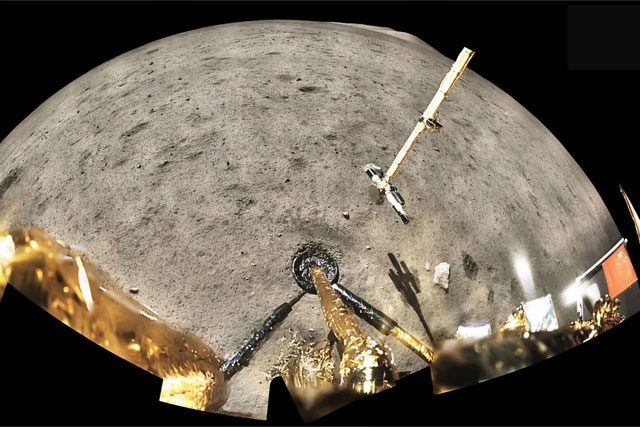Graphene, the superconductor material hailed as the “black gold” of the 21st century, has been discovered in lunar soil samples brought back by China’s Chang’e 5 mission.
The global scientific community is buzzing with excitement following the announcement that a research team from Jilin University (China) has found small amounts of natural Graphene in the lunar soil samples collected by the Chang’e 5 spacecraft. Published on June 23, 2024, this discovery holds immense significance, promising to create breakthroughs in superconducting material technology and to strongly boost industries worldwide. Graphene has long been recognized as a “miraculous” material with vast potential applications across various fields, including electronics, optics, physics, and biomedicine. With superior hardness, even exceeding that of diamonds, alongside excellent electrical and thermal conductivity, Graphene is expected to spark a revolution in the production of batteries, processing chips, super lightweight materials, and even advanced biomedical devices.
Previously, extracting Graphene from graphite posed significant challenges, requiring complex, expensive processes with low yields. However, the discovery of natural Graphene on the Moon opens up new avenues for this industry. Scientists believe that studying the composition and formation processes of Graphene on the Moon will lead to effective production methods, bringing this “wonderful” material into widespread use in everyday life.
The presence of natural Graphene on the Moon also provides valuable information for scientists studying the formation and development of the lunar crust. From this, we can gain a better understanding of the history of the Solar System and the formation of other planets.
So, what exactly is Graphene that makes it so sought after by scientists and technologists? In simple terms, Graphene is a carbon allotrope consisting of a single layer of carbon atoms arranged in a flat hexagonal lattice.

Graphene has been discovered in lunar soil samples brought back by the Chang’e 5 mission.
Every 1 mm of ordinary graphite contains up to 3 million layers of Graphene stacked on top of each other. With its unique structure, Graphene possesses outstanding properties that capture the attention of the scientific community. The electrical conductivity of Graphene is incredibly impressive, even surpassing that of copper.
Scientists have demonstrated that at extremely low temperatures of -271 degrees Celsius, the resistance of Graphene is nearly zero, making it a promising candidate for superconducting materials. Not only that, but Graphene is also the hardest material known, even harder than diamonds.
A single layer of Graphene, just 100 nanometers thick, can withstand pressures of up to 2.9 microns, equivalent to nearly 2 tons of weight. This remarkable strength, combined with its flexibility and ultra-lightweight properties, makes Graphene a perfect candidate for numerous industrial applications.
Currently, Graphene is most widely applied in the field of new energy. Approximately 71.4% of the market for conductive materials in lithium-ion batteries is produced from Graphene. Many automotive companies are also beginning to use Graphene to manufacture lighter and more durable car bodies.
Since 2010, leading global tech corporations such as Samsung, Apple, Foxconn, and Huawei have heavily invested in the research and application of Graphene. The race to control this precious resource has officially begun.
Experts predict that Graphene will be the “star” of the future across many industries such as chemistry, materials, energy, and biomedicine. Whoever masters the technology to produce and apply Graphene will hold the key to leading in the next industrial revolution. However, finding an effective, fast, and cost-efficient method for extracting Graphene remains a challenging puzzle.
For a long time, Graphene was thought to be incapable of existing independently and had to be bound in graphite. It wasn’t until 2004 that two scientists, Andre Geim and Konstantin Novoselov (from the University of Manchester, UK), successfully isolated a single layer of Graphene from graphite using the tape exfoliation method. This historic discovery earned them the Nobel Prize in Physics in 2010.
However, this method only produces very small quantities of Graphene, insufficient to meet research and application demands. The discovery of natural Graphene in lunar soil by China is considered a breakthrough in Graphene research, opening up the potential for exploiting this valuable resource in space.
Many hope that in the future, humans will be able to establish factories to extract natural Graphene on the Moon. Some even bolder ideas propose building solar energy stations that use Graphene as an energy-absorbing material.


















































